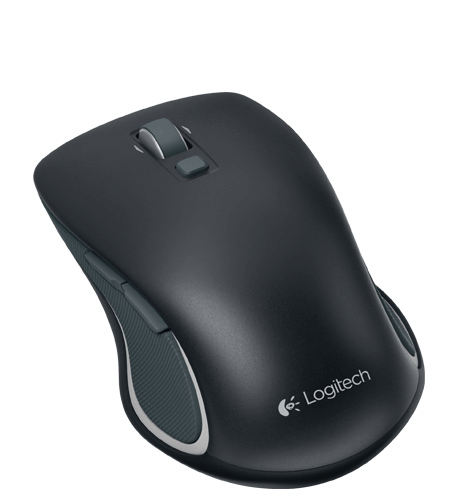![]() Last week’s “Microsoft Fantasy” here on GNC suggested that Microsoft was in danger of fading into irrelevance; that it should retreat to servers and gaming; that it should re-orient its mobile strategy around Android. I suggest that Microsoft is now very well positioned to offer far more than its competitors. And to negate any ad hominem attacks, I’m no Microsoft fanboy – I’ve a Linux desktop, Android tablet, Nexus smartphone and a Chromebook – but I can see a better strategy in Microsoft than defeat and retreat.
Last week’s “Microsoft Fantasy” here on GNC suggested that Microsoft was in danger of fading into irrelevance; that it should retreat to servers and gaming; that it should re-orient its mobile strategy around Android. I suggest that Microsoft is now very well positioned to offer far more than its competitors. And to negate any ad hominem attacks, I’m no Microsoft fanboy – I’ve a Linux desktop, Android tablet, Nexus smartphone and a Chromebook – but I can see a better strategy in Microsoft than defeat and retreat.
There are three players in the OS space – Microsoft with Windows, Google with Android and Apple with iOS. Each of these pairings has strengths and weaknesses. Microsoft is strong in servers, PCs and gaming. Google is good in mobile. Apple’s strength lies in PCs, entertainment and mobile. Obviously there are other players, such as Sony who are strong in gaming, but they can be discounted without OS aspirations.
Microsoft is a large organisation. It can be slow to respond and doesn’t always identify and embrace future technologies as fast as it should. The internet and Internet Explorer is a pretty good example. Other times, it moves into new markets, starting slowly and building up: look at the Xbox – it’s the market-leader. Certainly Microsoft has never been strong in the smartphone market being overshadowed previously by Blackberry and Palm, but it has a track record of trying tablet-type devices. Anyone remember Windows XP Tablet Edition? No, you probably don’t, but it existed.
But let’s think about how Microsoft’s competitors can realistically move in on their turf. For all the rise of BYOD, most large organisations use Windows on the desktop, Exchange for email, Ms Server on the tin. Google is trying hard to offer software as service in the cloud but there’s still lots of nervousness about the cloud and the leaks about US snooping aren’t going to help. Apple isn’t big in business by any stretch of the imagination and this is unlikely change. Both Apple and Google are into entertainment but neither have expressed much interest in hardcore gaming. It’s certainly not impossible for a hot Android or iOS console to come out but for now I think we can discount that.
Accepting then that Microsoft is reasonably unassailable (without being complacent) in gaming or business, let’s look at mobile and tablets in particular. Both Apple’s iPad and Android-based tablets are great devices, but even the most ardent fan will admit that tablets are generally best for consumption rather than production – it’s watching videos, surfing the web, listening to music. For creation, most people return to the keyboard and mouse on a desktop or laptop. Looking at business, while opportunities exist for tablets in business without a doubt, the bread and butter is still going to orient around Word and Excel.
The trend to mobile has been going on for years: from the desktop to the laptop to the tablet. But it’s extension to new devices, not extinction of the old. When laptops came out, did all the desktops go away? No. And it will be no different with tablets. We can see the rebalancing in the slow down of PC sales but this is entirely to be expected.
And this is Microsoft’s killer advantage – a potentially seamless suite of devices and form-factors from servers, through desktops, laptops, tablets and smartphones. Business in particular want to use what they have already invested in – ActiveDirectory, Group Policies, Sharepoint. Microsoft and its partners are responding to this with devices that offer both a touch interface via the Modern UI and a traditional desktop for legacy applications where a keyboard and mouse is needed. The bottom line is that there’s no longer any need to shoehorn in Apple or Android onto the infrastructure at extra cost.
But what about the consumers? They’re not businesses, they’ve no investment, they’re not going to be swayed by ActiveDirectory concerns. They want apps! Absolutely, but let’s be honest about apps – most key apps and popular games are available across all platforms, and the relative low cost of apps means that it is easier to jump ship to a different OS. Windows 8 isn’t perfect, but I would lay good money that if a 7″ Windows-based tablet was available for Nexus 7 money, they’d sell shed-loads. A similar argument follows for smartphones and Windows Phone has actually been doing quite well recently with solid gains according a recent IDC survey.
Microsoft is ahead of the game in recognising that the future is not a tablet future, but a touch future, and building touch into the core of Windows is a winner. For me, all Microsoft needs to do it get the prices down, tweak the usability of Windows 8 and continue with the “Windows Everywhere” advertising. It’s a Microsoft future.











